
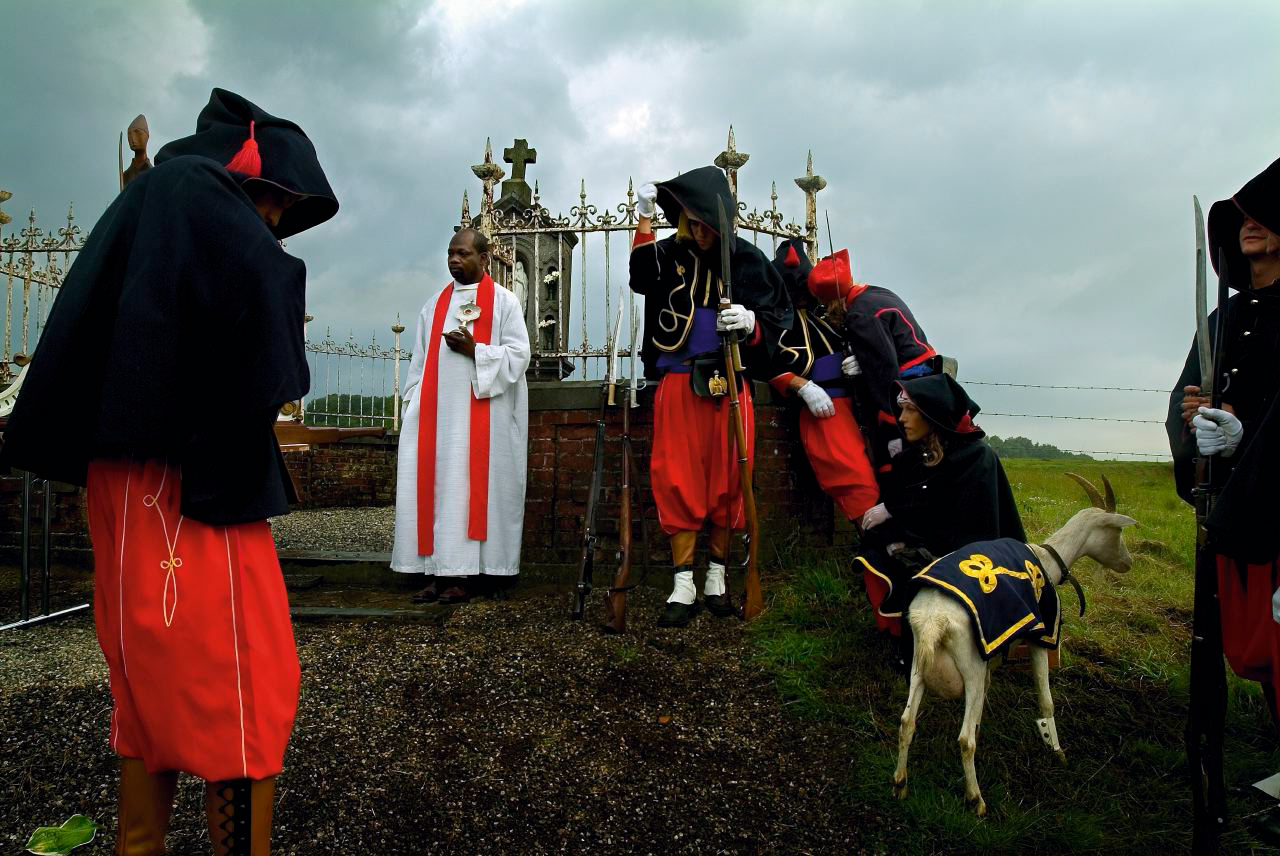
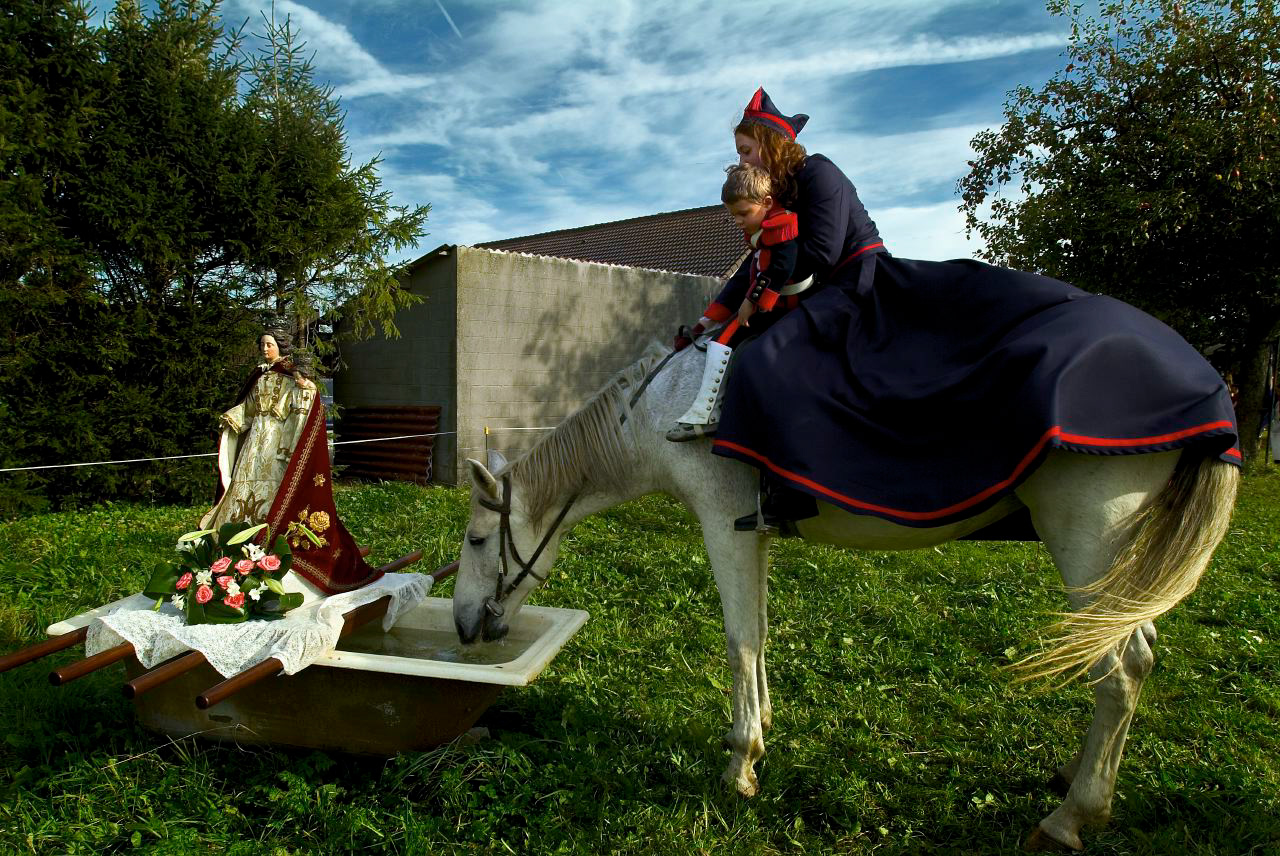
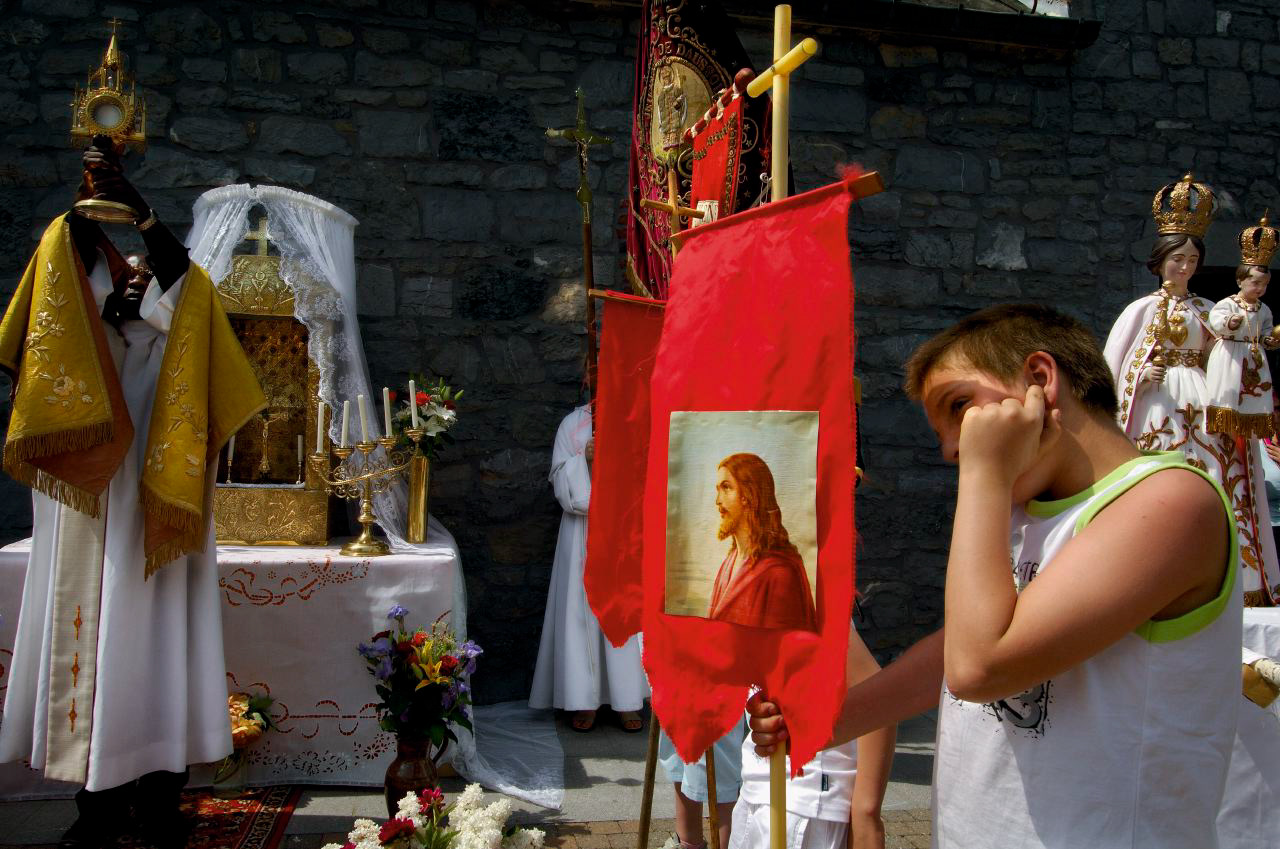
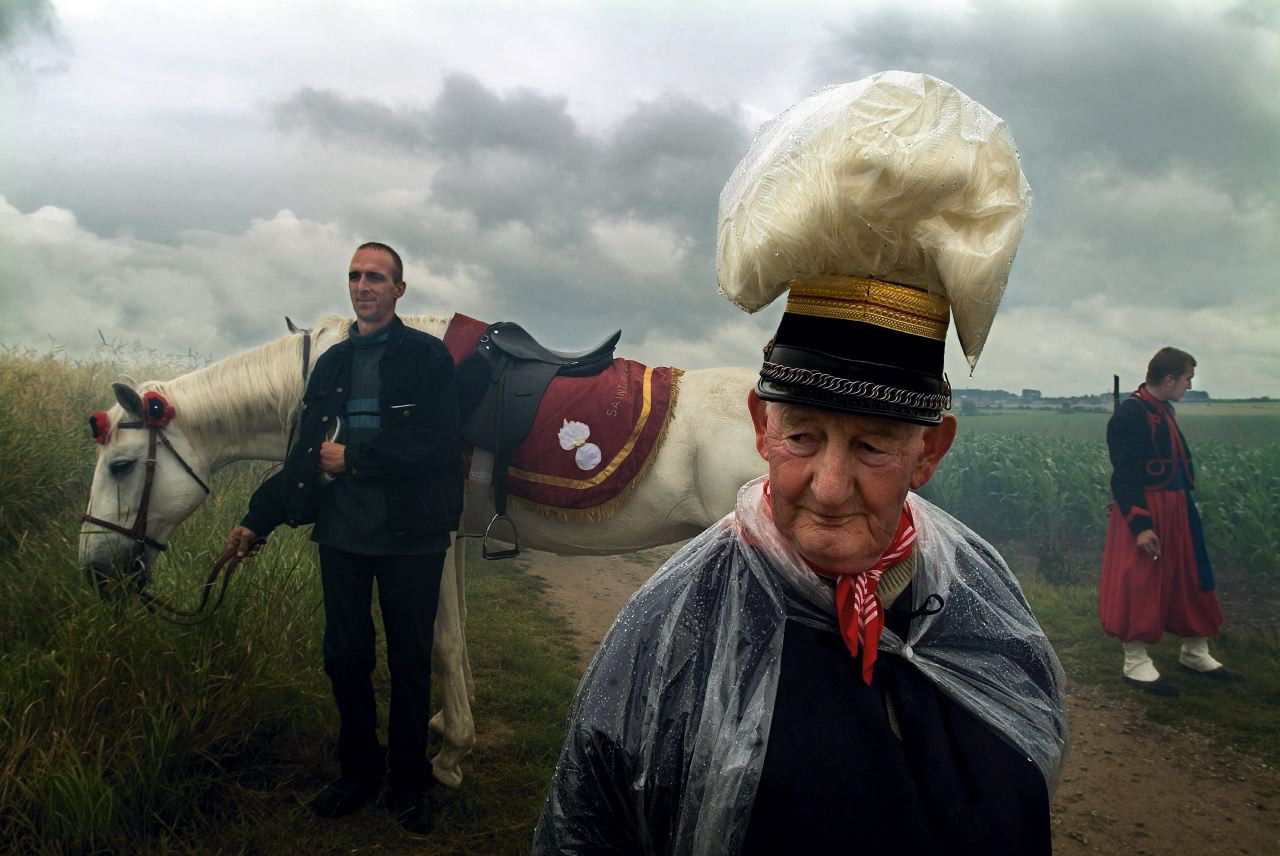

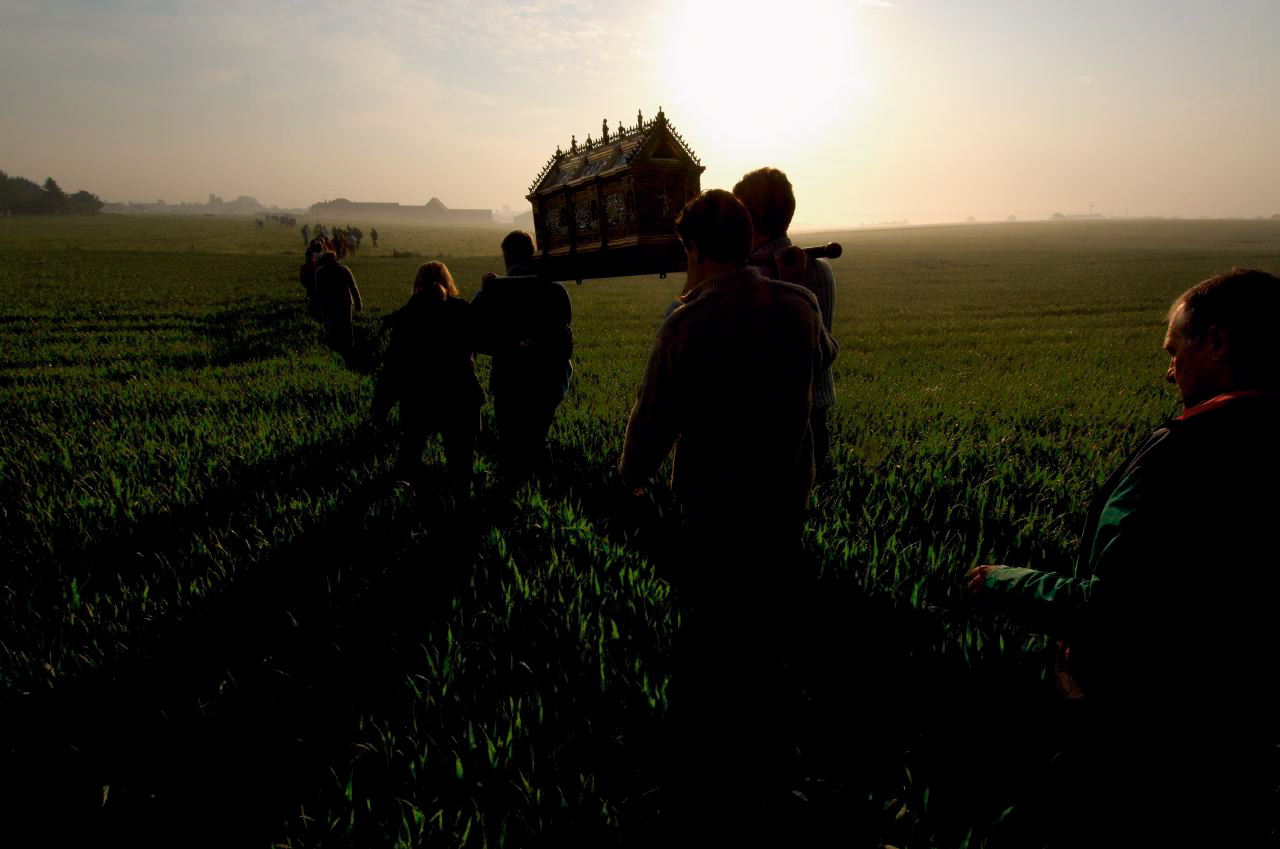

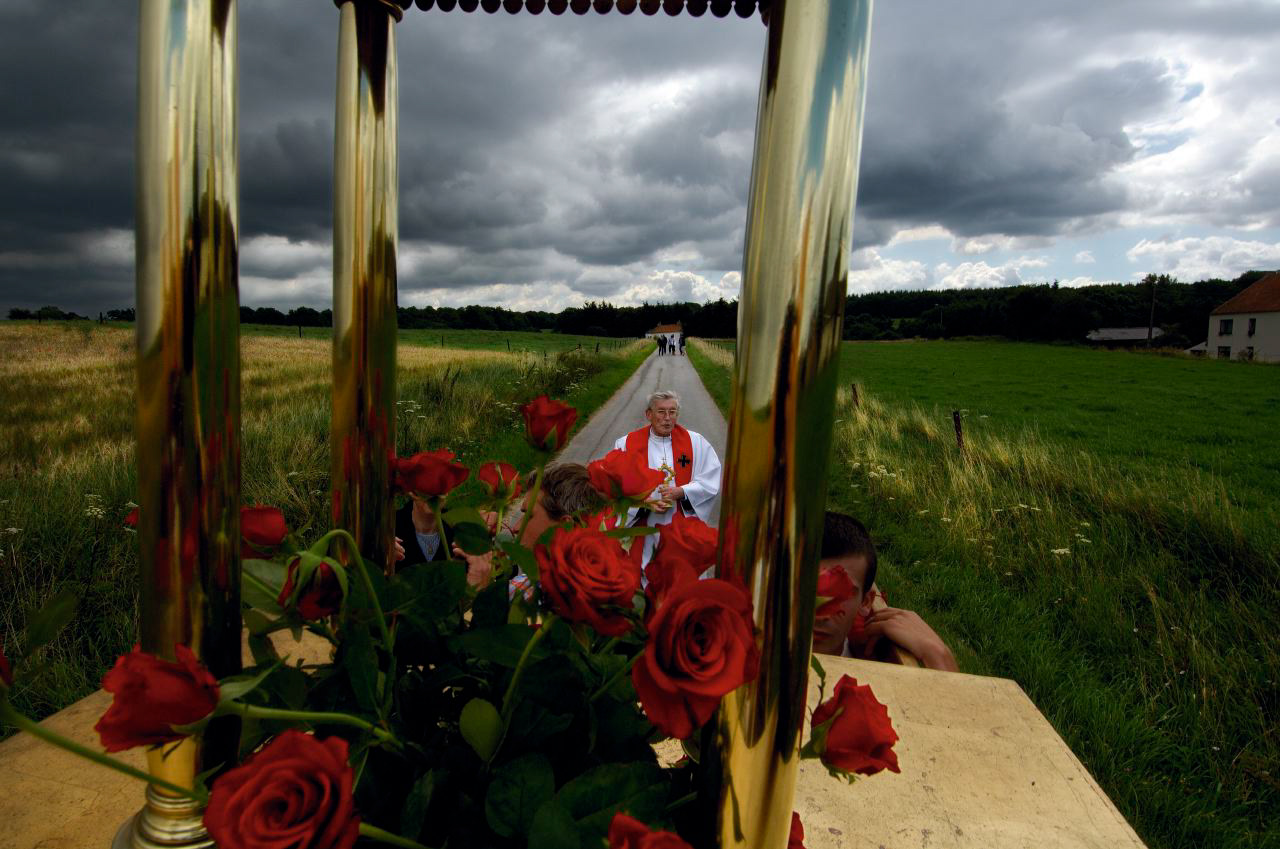
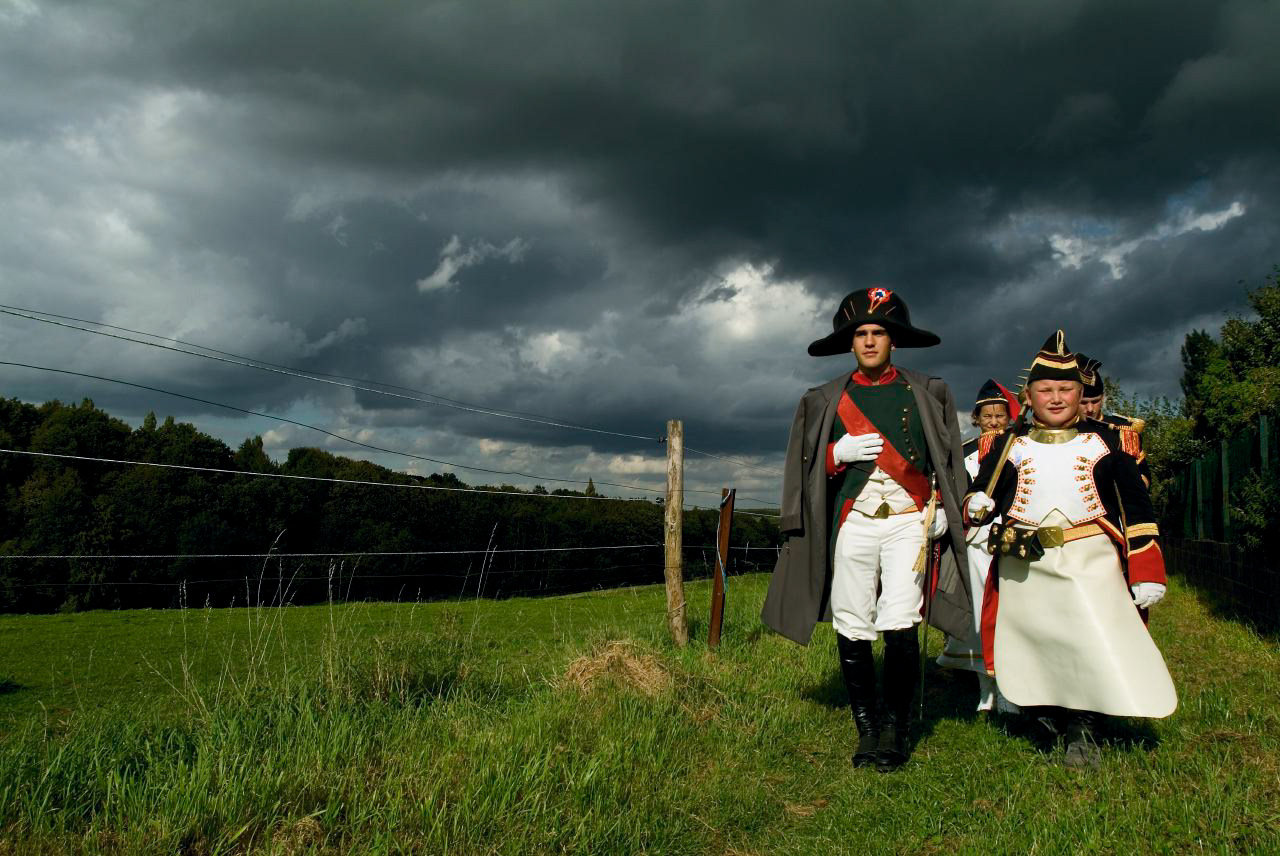
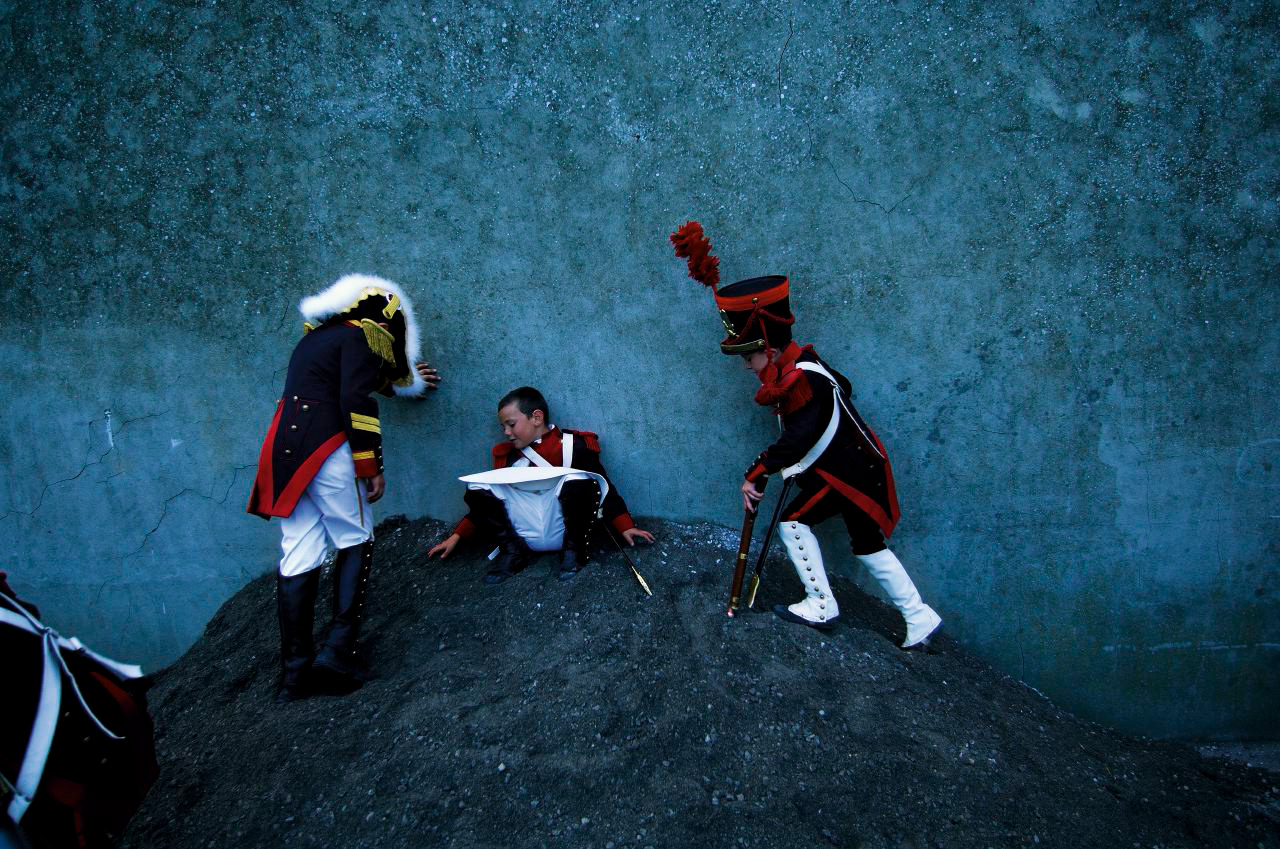

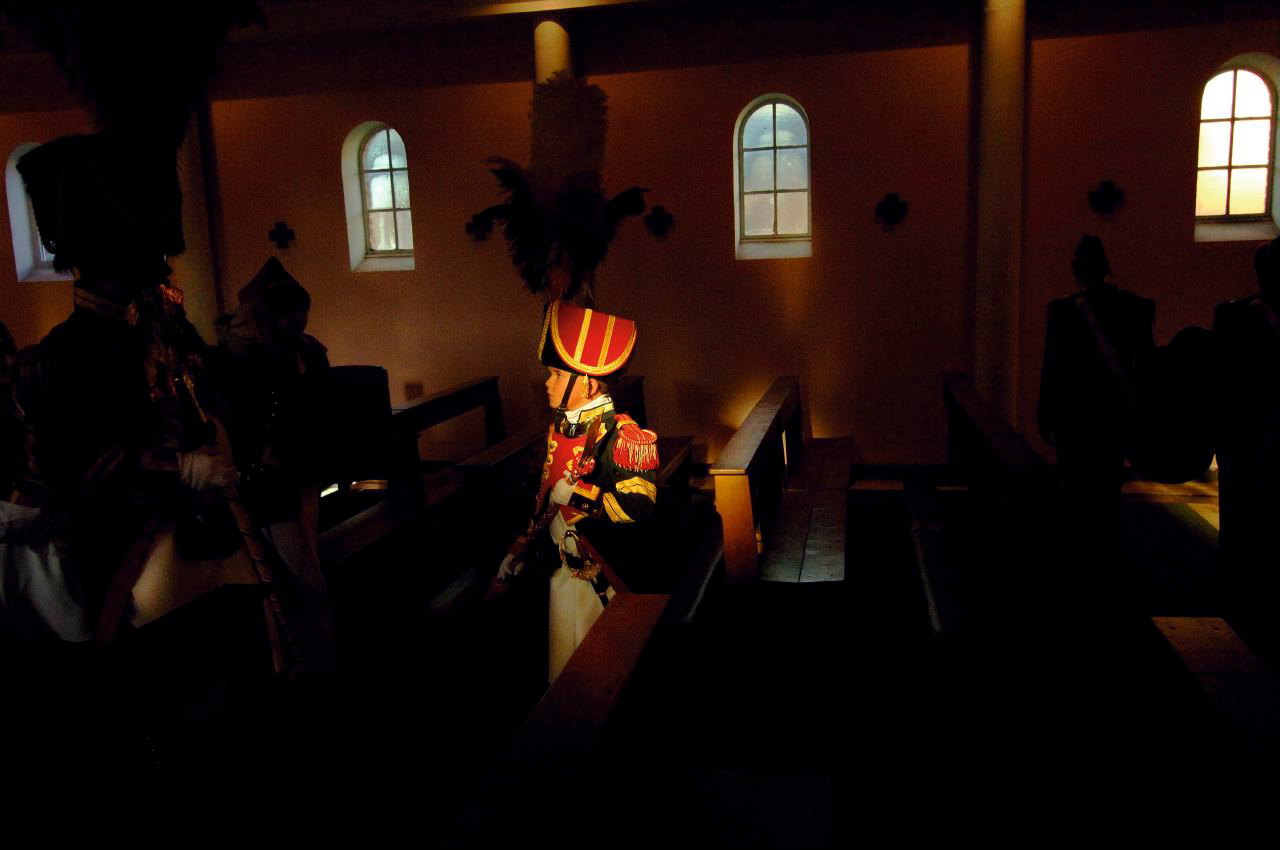

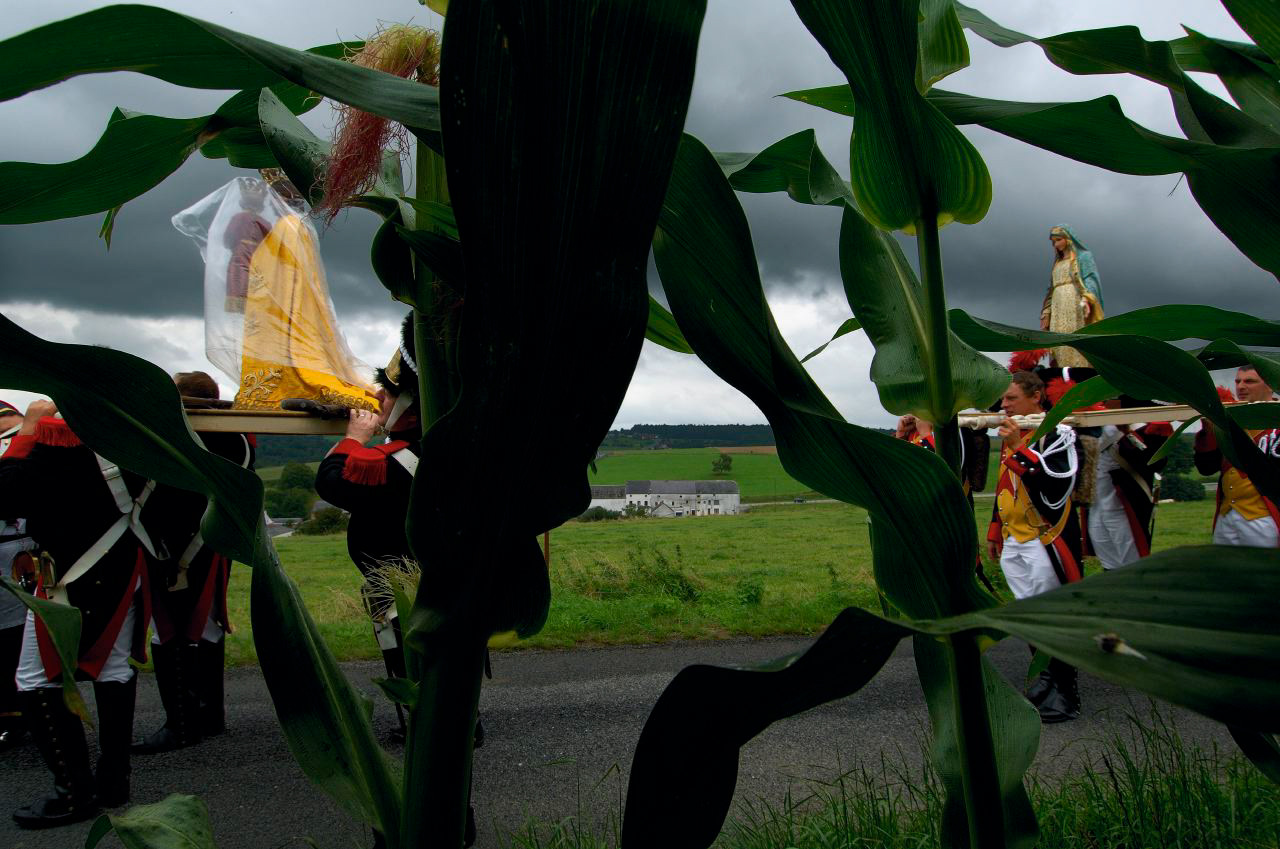
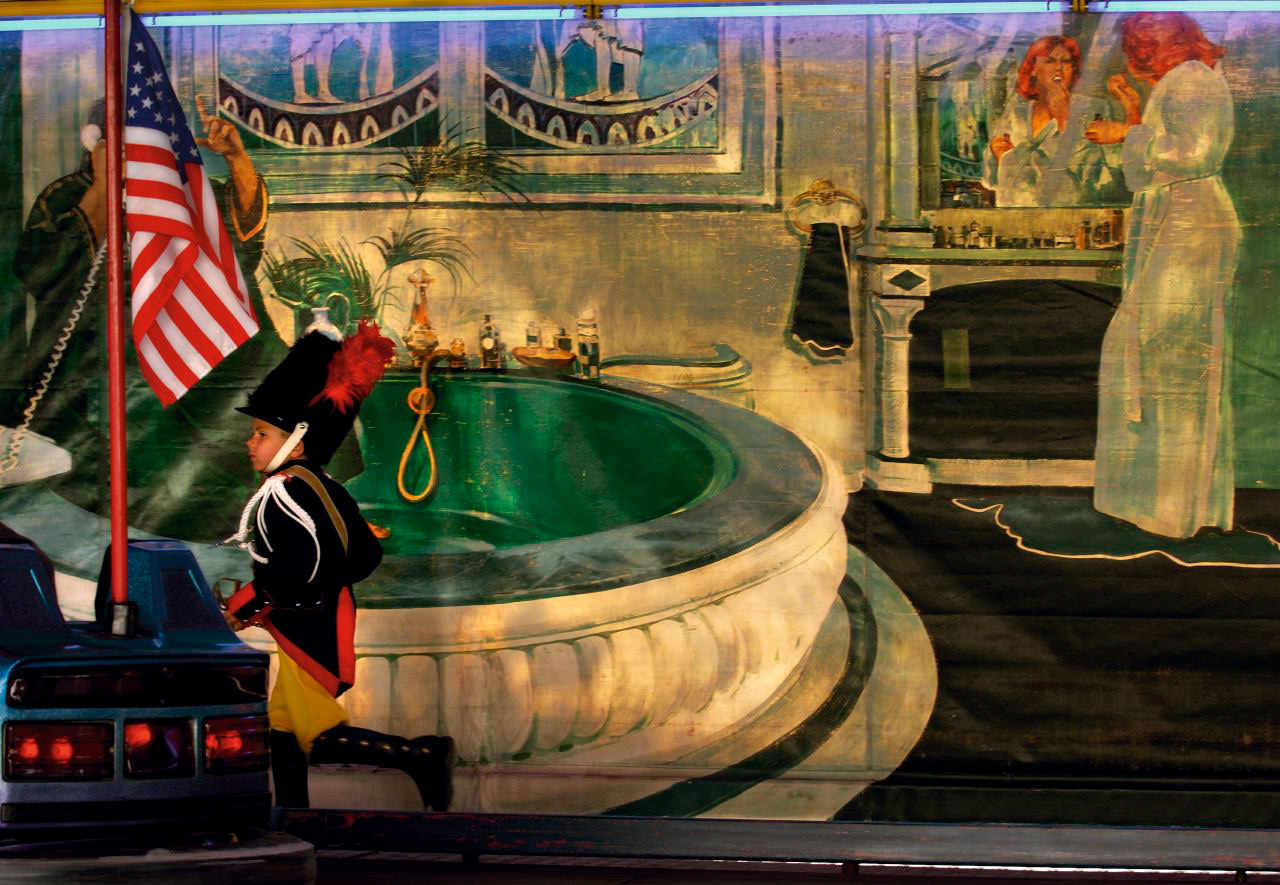
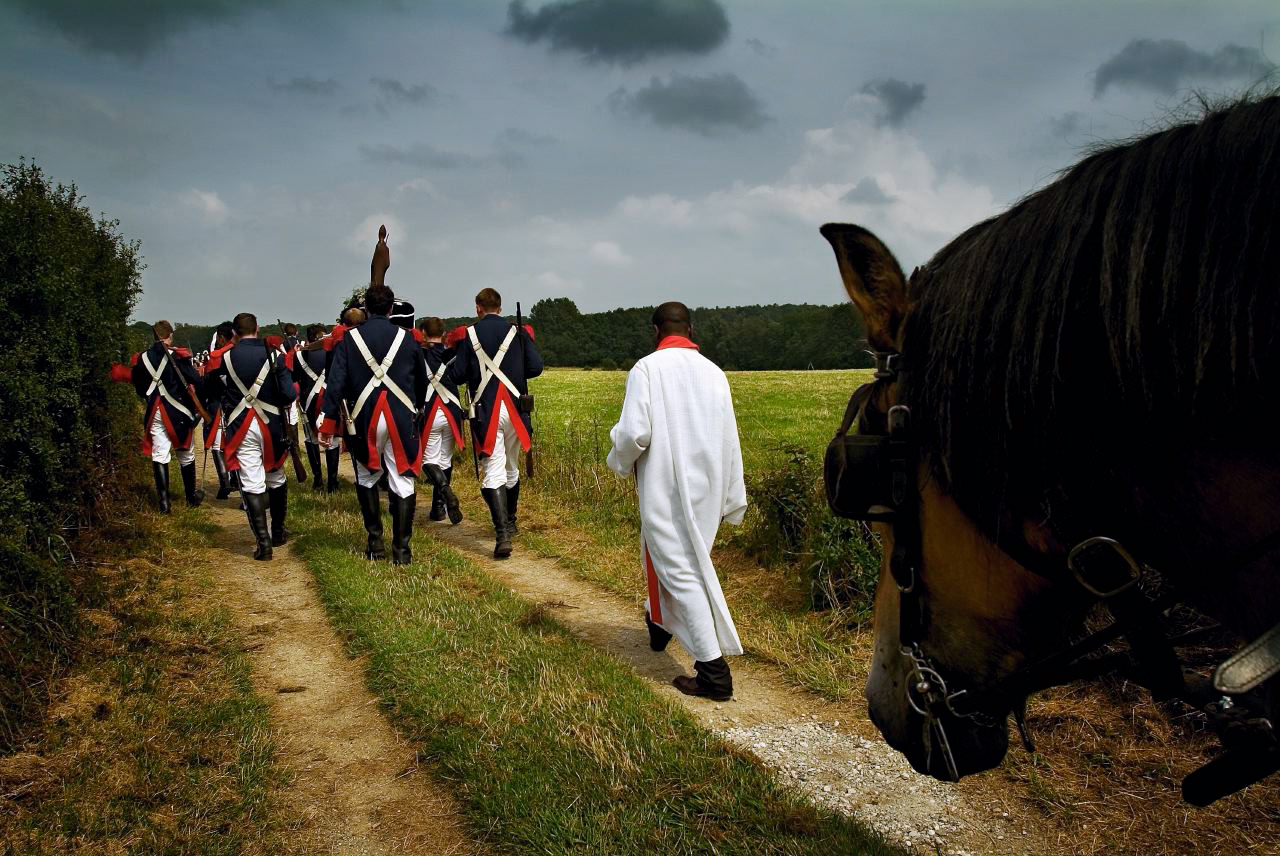

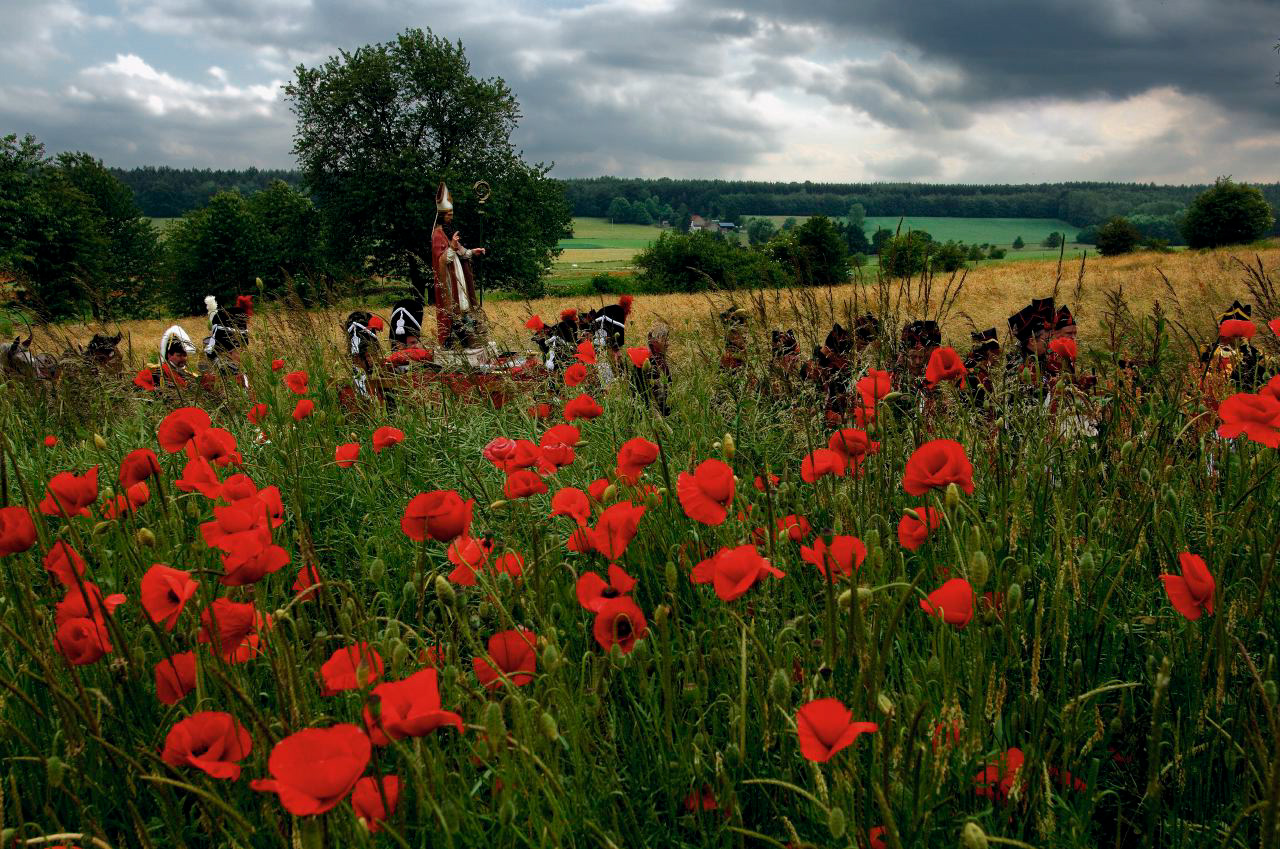


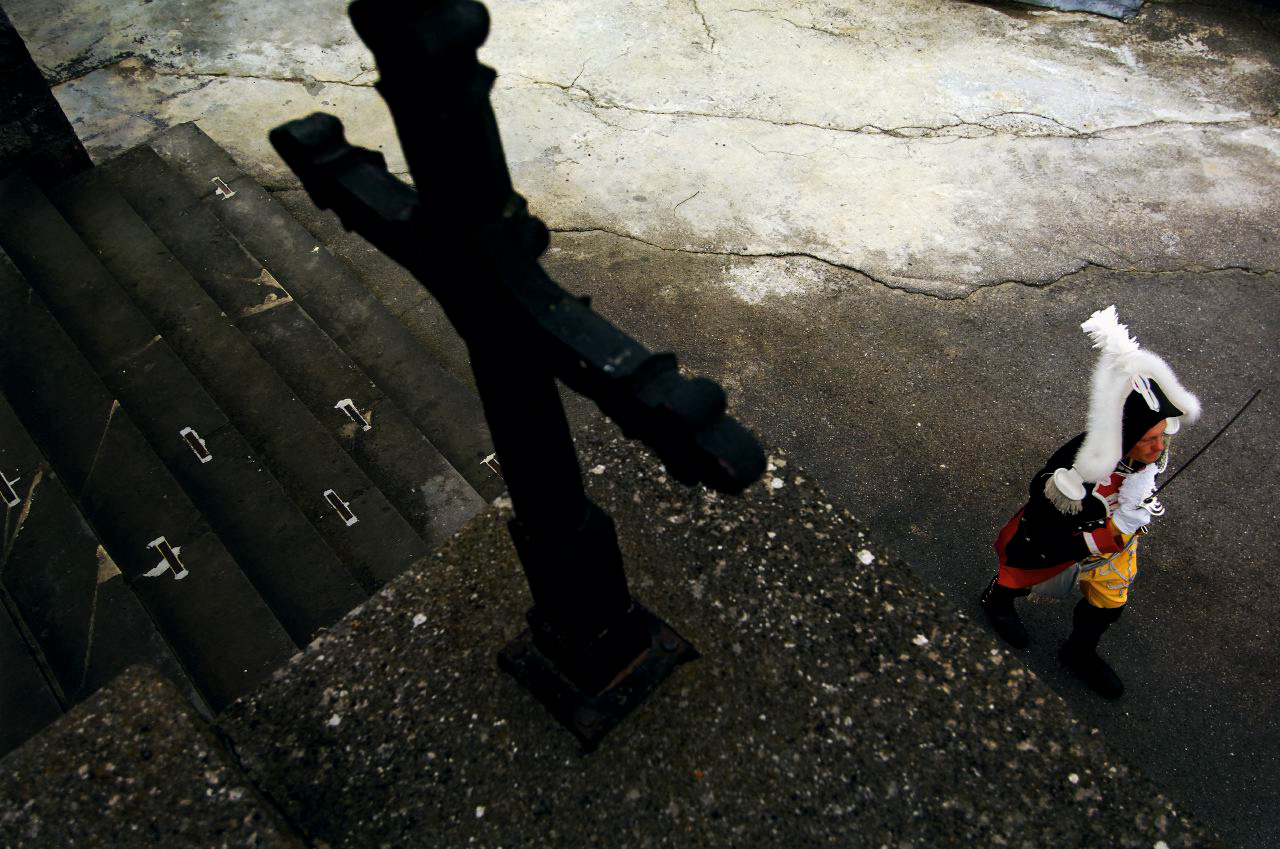

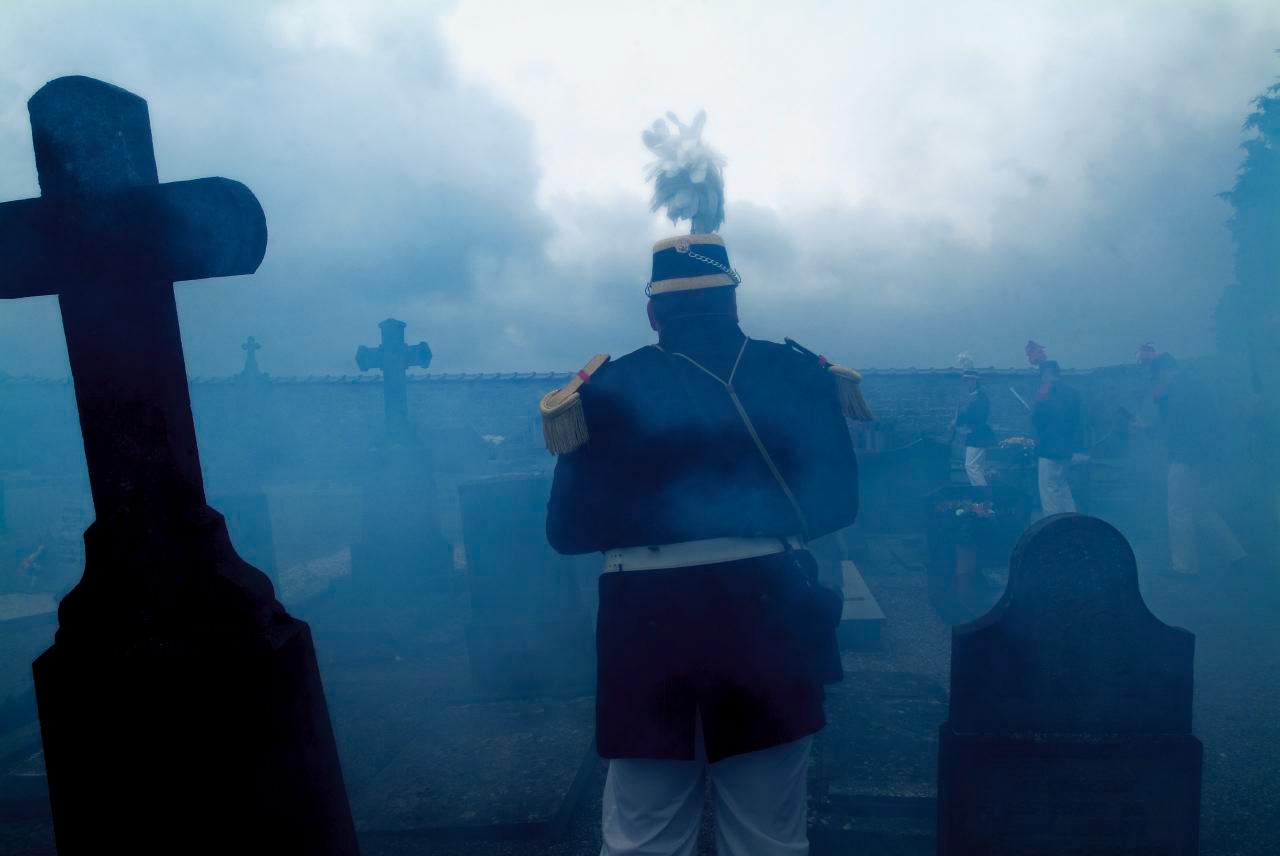

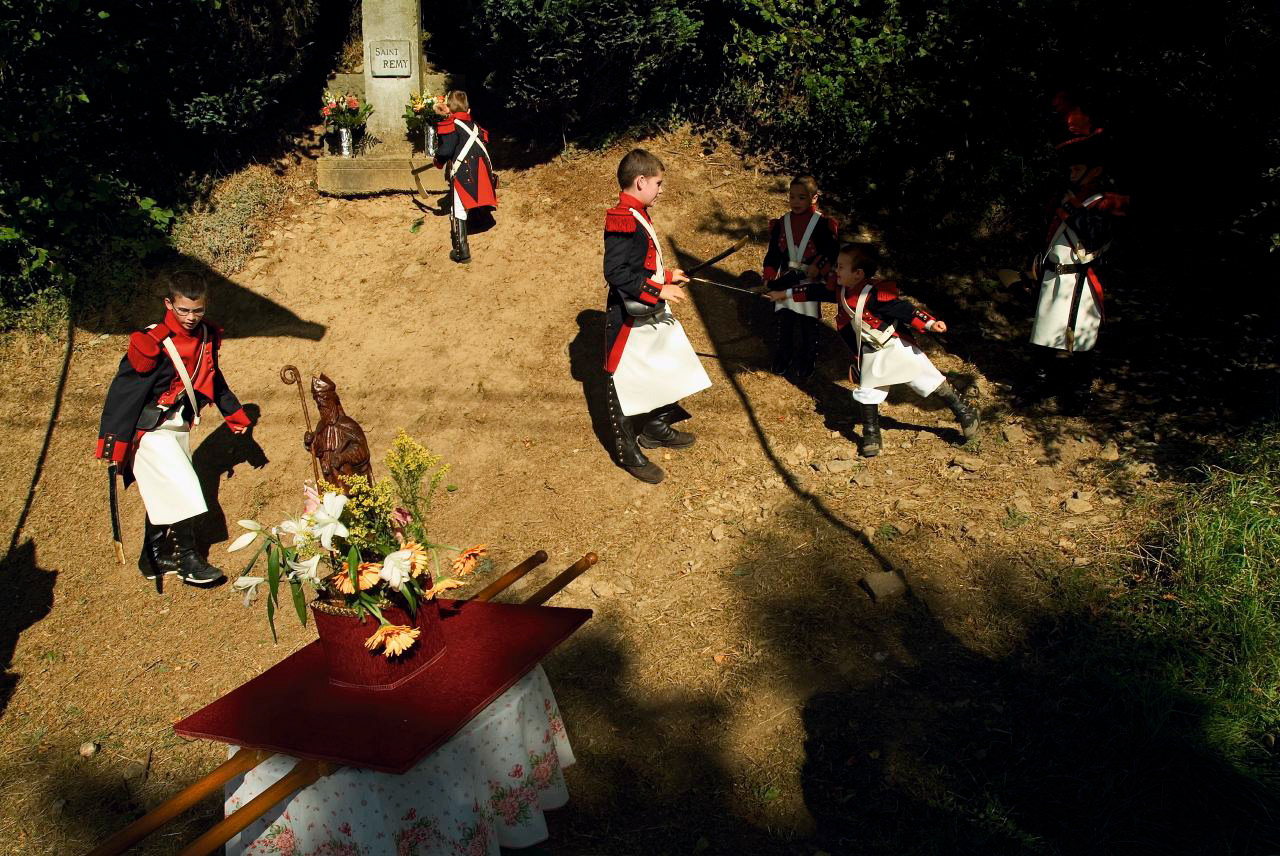

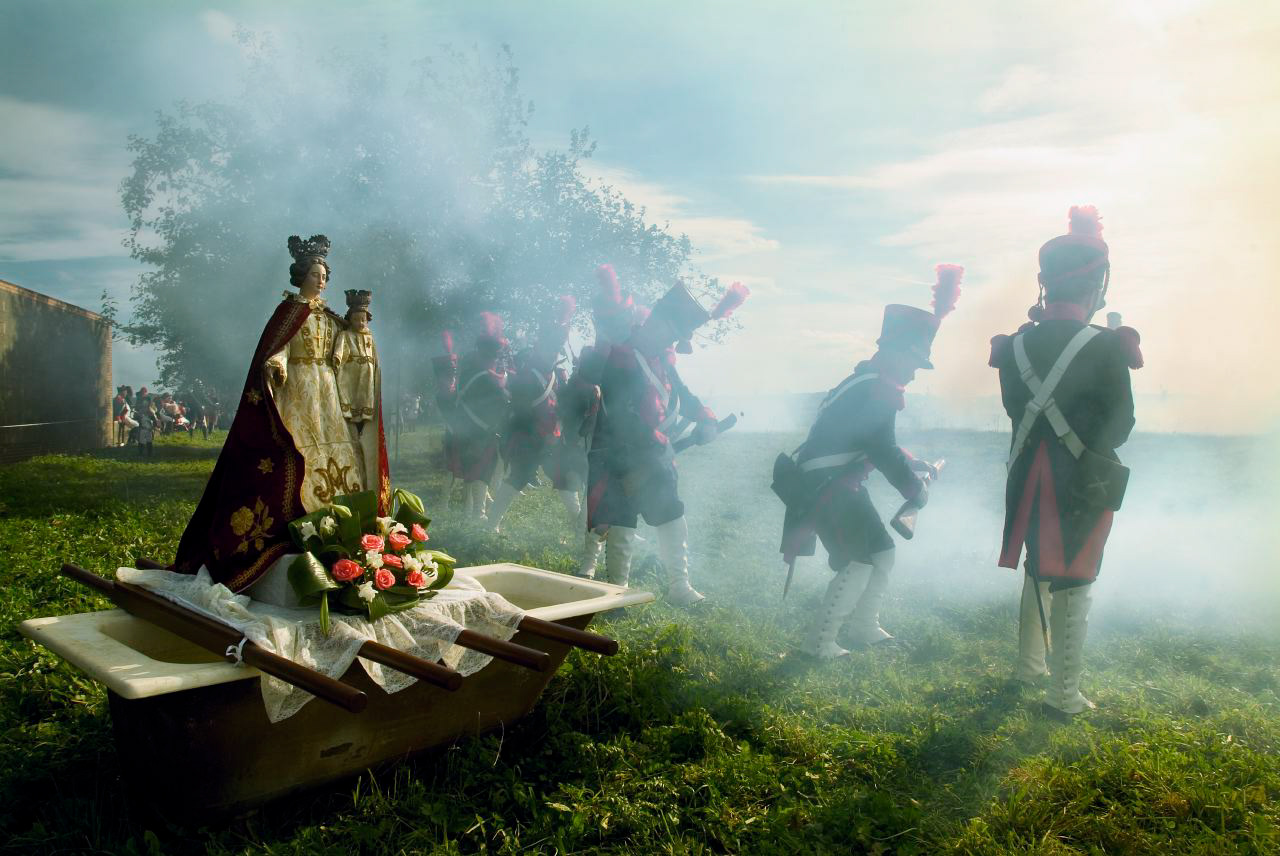
(click on the picture to see more images and then click miniatures to enlarge the photos) L’Entre-Sambre-et-Meuse in Belgium is an historical region that lies in between the Sambre and the Meuse rivers. Separating Germany and France, two fiercely combative nations, the area endured incessant, often devastating passages for centuries. Over time, the locals acquired a taste for the sumptuous uniforms and the pomp and circumstance surrounding the processions that traversed the villages and countryside carrying the relics of saints preserved with great devotion. These processions have existed in the region of l’Entre-Sambre-et-Meuse for centuries. Today’s processions and marches are the continuation of ancestral practices. They owe their enduring popularity not only to faith and historic imitation, but also to the magnificent landscapes of this isolated region where customs and traditions have remained unchanged for centuries. Published in a book : "Procession de Foi", Editions Reporters.



























